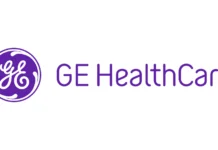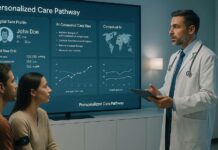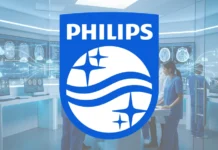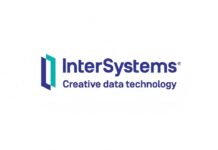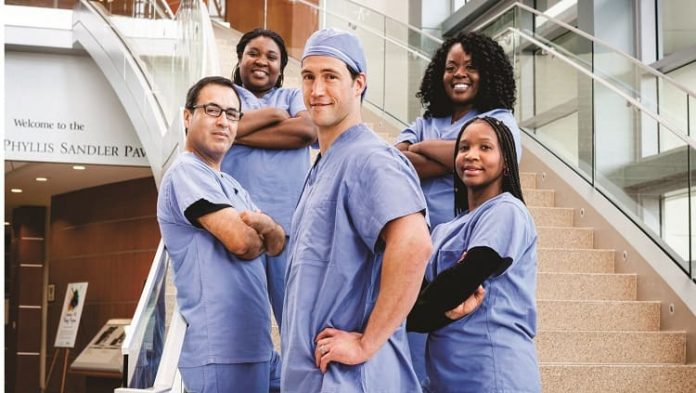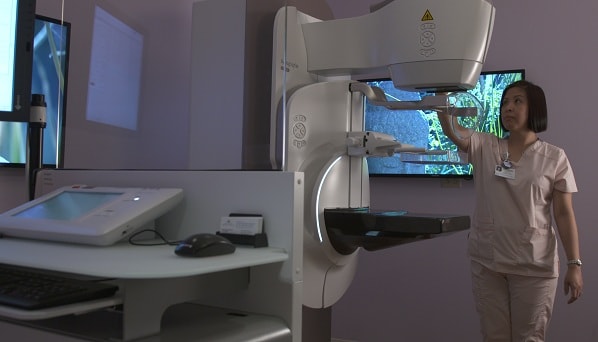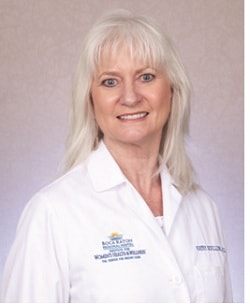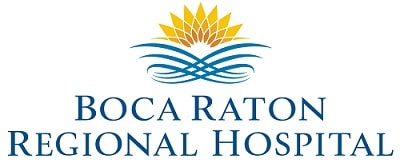As a breast imaging radiologist for 30 years and as a woman, I can confidently tell you that having a mammogram is not one of the most pleasant experiences that women undergo. Imagine having one’s breasts compressed tightly between two cold, hard surfaces while standing awkwardly in an exam room half-clothed. This is not something women look forward to each year.
And now, I can tell you first hand that the experience does not have to be that way.
Patients and radiologists can finally find solace in knowing that a new and far more comfortable mammogram exists. And the best part for me as a radiologist is that I do not have to sacrifice image quality or increase dose to improve the patient experience.
In March 2017, we installed Senographe Pristina, a totally redesigned 3D mammography system from GE Healthcare that looks and feels completely different. And I should know because I was the first woman in the U.S. to be imaged on “Pristina”. With full honesty and confidence, I’m here to tell you my exam on Pristina was painless. Before the technologist even began the exam, I knew it was going to be different.
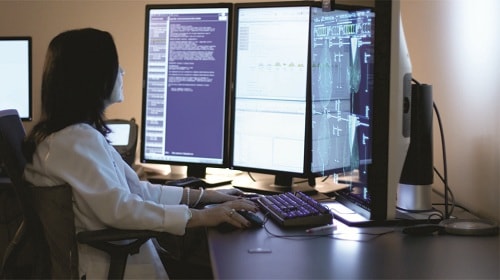 I immediately noticed the traditional sharp edges of the image detector had been replaced with beveled, rounded corners. During compression, which is typically the most uncomfortable part of the exam, I could tell that the image detector was much thinner so less hard metal came in contact with my skin and ribs. And the traditional handlebars that I used to grip so hard causing me to tense up were now replaced with an armrest where I could comfortably drape my arms. The changes made the subsequent compression significantly less uncomfortable and not at all painful.Since my first exam on Pristina, we have screened more than 1,500 patients and the feedback has been overwhelmingly positive.
I immediately noticed the traditional sharp edges of the image detector had been replaced with beveled, rounded corners. During compression, which is typically the most uncomfortable part of the exam, I could tell that the image detector was much thinner so less hard metal came in contact with my skin and ribs. And the traditional handlebars that I used to grip so hard causing me to tense up were now replaced with an armrest where I could comfortably drape my arms. The changes made the subsequent compression significantly less uncomfortable and not at all painful.Since my first exam on Pristina, we have screened more than 1,500 patients and the feedback has been overwhelmingly positive.
Our patients tell us it is the most comfortable mammogram they have ever had. They are saying it’s quicker and they feel as though they are not being compressed as hard, when in fact they are receiving the same – if not more – compression than in previous years. It seems that the comfort of the exam allows the patient to tolerate more compression. Not only are they telling their friends and family to get their mammograms on Pristina, they are saying they aren’t dreading coming back for their mammogram next year.
In fact, a recent survey of more than 300 Pristina patients conducted by an imaging center in Italy showed that the majority (83 percent) of patients rated their experience with Pristina better than any they had on previous systems, with 70 percent citing better comfort during their exams.
Simply put, patients imagedon Pristina are visibly more relaxed. Any breast radiologist knows that relaxed patients lead to better images and better images lead to a more confident diagnosis. My hope is that with a more comfortable exam, patient compliance should improve, enabling more women to benefit from early detection and improved outcomes. This is why I prefer Pristina – and why our patients are asking for it.
Finding breast cancer early reduces a woman’s risk of dying from the disease by 25-30 percent or more. In the U.S., one in eight women will develop invasive breast cancer over the course of her lifetime. However, nearly half of all women, and 30 percent of women 50 and older, skip their regular mammogram in part because they believe the exam is too painful. But I can do my part in changing this staggering statistic by offering my patients a more comfortable experience.
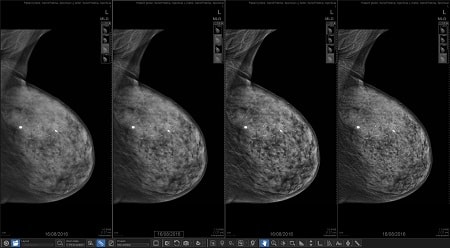 The system not only improves the patient experience, but it also improves our technologists’ experience. Our early evidence suggests improving the experience for the technologist can improve the overall quality and efficiency of the exam. Pristina is designed to make it easier for the technologist to position the patient, which means the technologist spends less time on re-positioning – a leading cause of retakesand a possible cause of a decrease in sensitivity .By being able to position mediolateral oblique (MLO) views with the tube parked out of the way, there is less pain and strain for the technologists because of the improved ergonomics. The combination of a relaxed patient and an efficient technologist leads to more breast tissue present on the mammogram and better overall image quality. This provides me with better information when it comes time to interpret the findings.
The system not only improves the patient experience, but it also improves our technologists’ experience. Our early evidence suggests improving the experience for the technologist can improve the overall quality and efficiency of the exam. Pristina is designed to make it easier for the technologist to position the patient, which means the technologist spends less time on re-positioning – a leading cause of retakesand a possible cause of a decrease in sensitivity .By being able to position mediolateral oblique (MLO) views with the tube parked out of the way, there is less pain and strain for the technologists because of the improved ergonomics. The combination of a relaxed patient and an efficient technologist leads to more breast tissue present on the mammogram and better overall image quality. This provides me with better information when it comes time to interpret the findings.
We first began this journey of creating a more relaxed mammography experience for our patients three years ago when we converted all of our exam rooms to SensorySuites, a spa-like room that stimulates three of a woman’s senses—smell, sight and sound simultaneously.
By distracting her during the mammogram by engaging two or more senses at the same time, the patient’s perception of pain and anxiety are significantly reduced. And we know it is working.
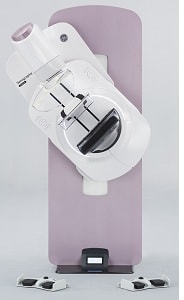 In 2014, we surveyed 167 mammography patients: 114 underwent a mammogram in a standard room and 53 had the exam in a SensorySuite. The discomfort and anxiety levels between the two groups were strikingly different. Our results showed that twice as many women who had their mammogram in the SensorySuite had no discomfort at all. And 51 percent of patients in this spa-like room reported no anxiety compared with 36 percent of women in the standard room.
In 2014, we surveyed 167 mammography patients: 114 underwent a mammogram in a standard room and 53 had the exam in a SensorySuite. The discomfort and anxiety levels between the two groups were strikingly different. Our results showed that twice as many women who had their mammogram in the SensorySuite had no discomfort at all. And 51 percent of patients in this spa-like room reported no anxiety compared with 36 percent of women in the standard room.
Two years ago, we took the survey one step further by analyzing 303 of our mammography patients to find out if the sensory-stimulating environment, which we knew helped to relax the patient, can improve tissue visualization. Our results showed the spa-like environment improved the amount of breast tissue captured during the exam by 5 percent over the amount of tissue imaging in the standard exam room.
In our continued effort to create the most comfortable experience for our patients, we naturally saw Pristina as the next step toward accomplishing this goal.
It’s a different day and with that comes a new age in breast imaging. We know we cannot change the mechanics of a mammogram, but we can certainly change what the patient experiences during her exam to make it better. The creation of a comfortable mammogram has truly transformed the patient experience.




